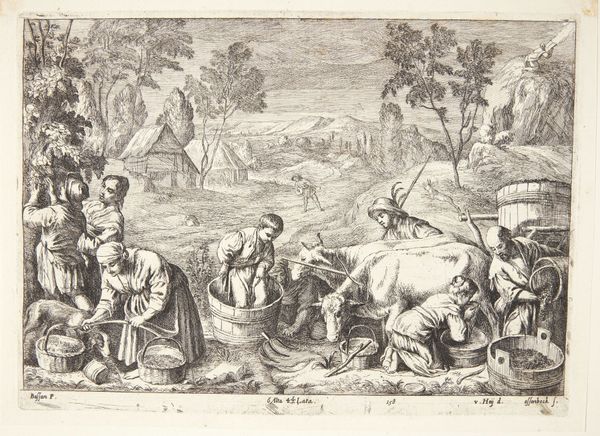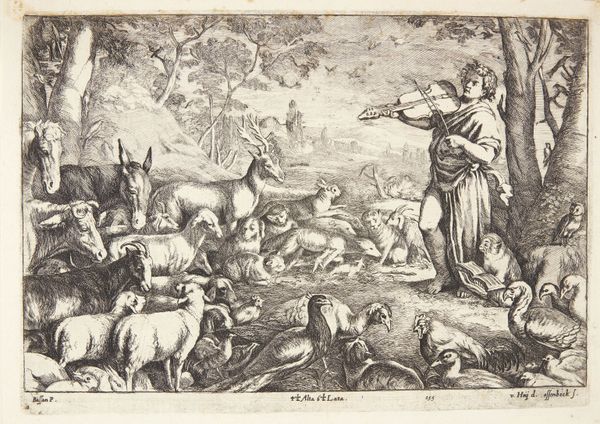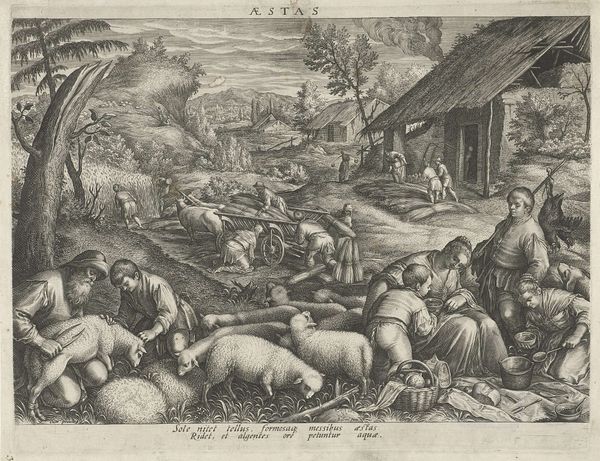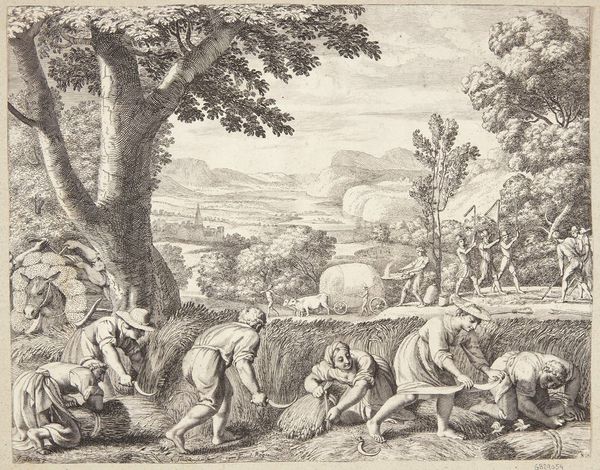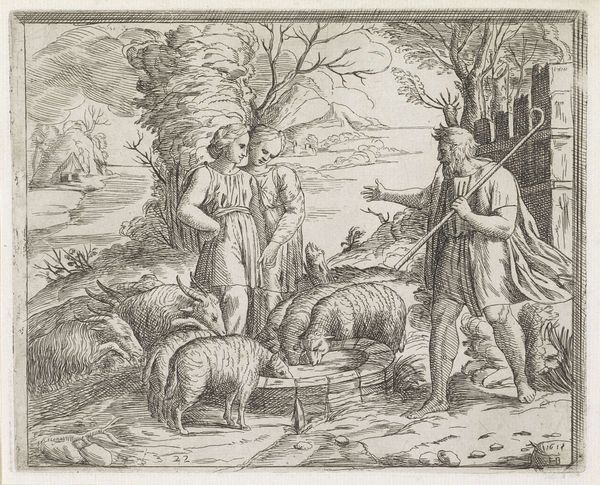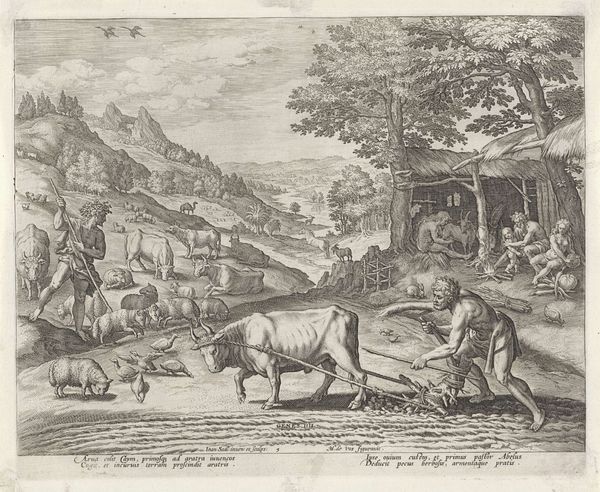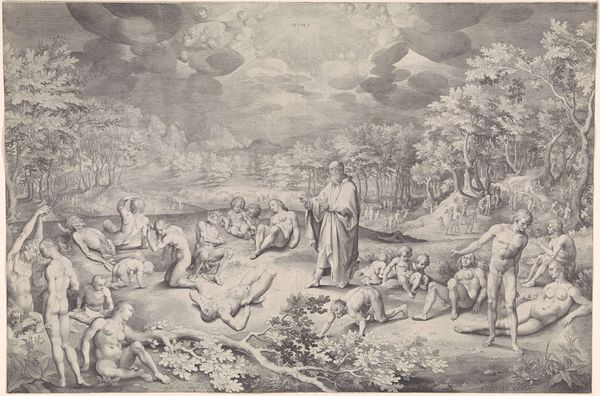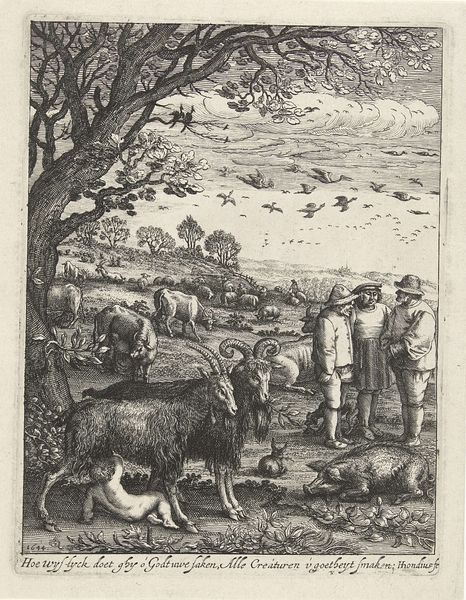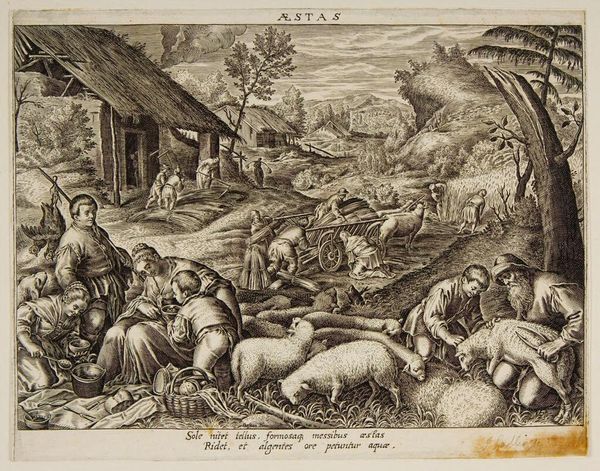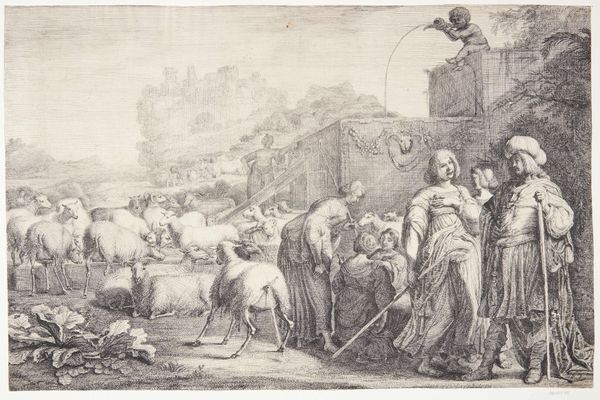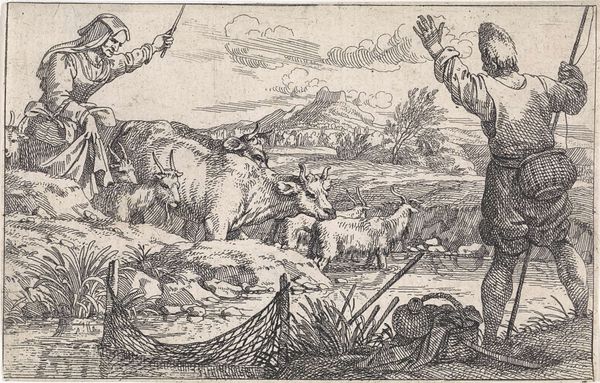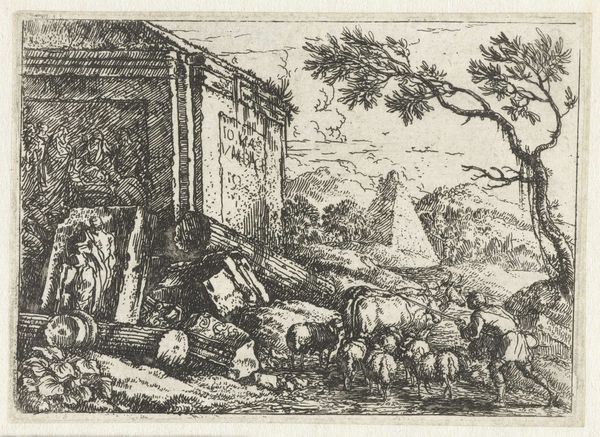
print, etching
#
dutch-golden-age
# print
#
etching
#
landscape
#
figuration
#
genre-painting
Dimensions: 217 mm (height) x 310 mm (width) (plademaal)
Curator: Look at this serene depiction of agrarian life. This is "Autumn" by Jan van Ossenbeeck, dating from around 1654 to 1660. It’s an etching, a type of printmaking common in the Dutch Golden Age. What do you see first? Editor: An intricate web of human figures amongst the sheep; there’s a starkness to the etched lines which creates an austere mood. Curator: Exactly, the starkness is the point. These etchings, with their detailed depiction of everyday labor, remind viewers of the seasonal rhythms that governed life. We are drawn to the continuous activity; everyone plays a necessary part. Observe the compositional balance, how the eye moves from the foreground activities to the distant hills. The home is set against an ever active topography. Editor: It's almost a utopian vision, everyone working interdependently on this hillside—yet there’s labor being distributed among all ages and sexes. It raises questions for me about social structures, and, as it seems rather romanticized, who exactly it’s for. Was Ossenbeeck making a claim for or against a social hierarchy, presenting a clear vision of its role in a healthy community? Curator: A point well taken, its possible a utopian representation is present to make exactly those points about hierarchy in relation to societal harmony. The use of symbolic imagery here adds weight. See the prominence of family and livestock? Both represent cyclical sustenance, both physical and generational. Look at the background, what you can see are what are considered the riches of life. Editor: It's a powerful statement of community interdependence and an implicit environmental consciousness that seems remarkably poignant today, reminding us of simpler relationships that perhaps did exist in the world at that time. Curator: I agree; in seeing these symbols, we also feel a powerful draw. We also begin to feel for a vision for a culture and people. What will you take away from this time with Van Ossenbeeck’s etching? Editor: Its an ode to collective social consciousness as well as perhaps collective environmental consciousness that I find valuable to ponder over. Curator: I’m most affected by the potent cycle of symbology throughout; seeing a unified, symbolic relationship between our generations that this depiction captures so beautifully.
Comments
No comments
Be the first to comment and join the conversation on the ultimate creative platform.
